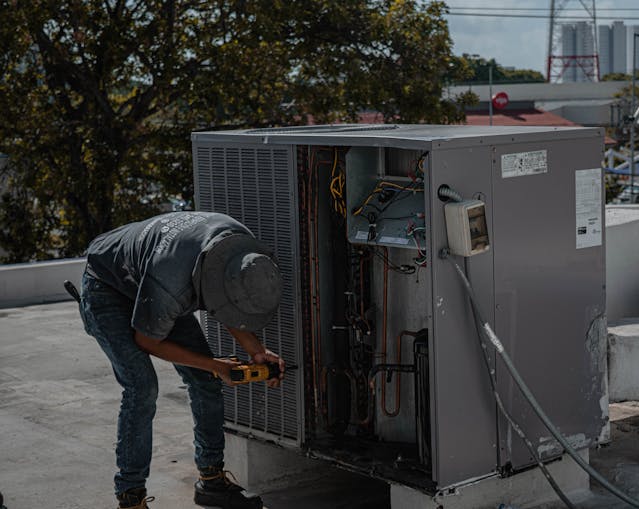Why Proper Sizing of an AC Unit Can Prevent Repairs?
We will explore how choosing the correct size for an air conditioning (AC) unit plays a significant role in preventing frequent repairs and ensuring long-term efficiency. AC units that are too small or too large for a space can lead to various mechanical issues, resulting in increased maintenance costs. Proper sizing directly impacts an air conditioning system's overall performance, energy consumption, and longevity. We will learn about it that how the right size influences these factors and the steps to ensure a perfect fit for your needs.
The Importance of Correct Sizing for Efficiency
Properly sizing an AC unit is crucial for its energy efficiency. When an air conditioner is too small for the space it needs to cool, it will struggle to maintain a comfortable temperature. This results in the unit running constantly at full capacity, which can cause overheating and increased wear and tear on the compressor and other components. On the other hand, an oversized unit may cycle on and off too frequently, failing to remove humidity properly, which can create an uncomfortable environment and lead to excessive energy consumption. An optimally sized system ensures that the air conditioner can run efficiently, consuming only the necessary energy to cool the space effectively. Proper sizing can prevent overheating, compressor failure, and other costly repairs caused by inefficiency by reducing strain on the system.
Reducing the Risk of Frequent Breakdowns
One of the key benefits of proper sizing is the reduction of breakdowns. An AC unit that is too small will have to work harder to cool the room, constantly pushing its limits to maintain a stable temperature. This continuous strain can lead to premature failures, especially in critical components like the compressor, motor, or evaporator coil. Conversely, an oversized system will cycle on and off rapidly, a process known as short cycling, which can also result in wear and tear on the system. The constant starts and stops can cause the motor to overheat or the refrigerant to become unstable, leading to leaks or other system malfunctions. Correct sizing ensures the system can operate within its capacity, reducing the risk of mechanical failures that often result in expensive repairs.
Enhancing the Lifespan of the AC Unit
Properly sizing an AC unit not only helps prevent repairs but also contributes to the system's overall lifespan. An air conditioner that is too large or too small can face stress that affects its longevity. For example, an oversized unit may cool the space too quickly, failing to run long enough to remove moisture from the air, which can cause issues like mold or mildew growth. On the other hand, a unit that is too small will continually struggle to meet the cooling demands, leading to frequent cycling and increased wear on the system. Proper sizing ensures that the unit runs steadily, keeping components in good working order for longer. This can delay the need for replacement and save homeowners significant amounts of money in the long run by minimizing the need for repairs or premature system replacements.
Improving Indoor Air Quality
Another benefit of properly sizing an AC unit is its impact on indoor air quality. An undersized unit may struggle to maintain the desired temperature, leading to inadequate air circulation and uneven cooling. This can result in areas of the home feeling hot or humid, creating discomfort for the occupants. In contrast, an oversized unit may cycle too quickly, failing to filter the air and remove moisture properly. Humidity that isn’t properly managed can contribute to the growth of mold and mildew, leading to poor air quality and potential health issues. A correctly sized AC unit provides consistent cooling and proper humidity control, ensuring that the air inside the home remains clean and comfortable. With the right system, the unit will effectively filter out dust, allergens, and other pollutants, enhancing the overall air quality and preventing long-term health problems.
The Role of Proper Sizing in Preventing System Overload
Proper sizing also helps in preventing system overload. An AC unit that is too large for the space will frequently short cycle, turning on and off repeatedly without running long enough to remove excess moisture from the air. This cycle creates an uneven balance of cooling, leading to an uncomfortable indoor environment and unnecessary wear on the system. Conversely, an undersized system will continually run at full capacity, struggling to keep up with the cooling demands of the space. This continuous strain can cause components like the compressor or condenser to overheat, eventually leading to system failures. A properly sized AC unit ensures a balanced operation, reducing strain on the system and preventing components from overloading. This improves the comfort level inside the home and protects the system from costly repairs caused by excessive use.
The proper sizing of an AC unit is essential for maintaining a comfortable and energy-efficient environment while preventing costly repairs. An undersized or oversized system can lead to various mechanical issues, including frequent breakdowns, reduced lifespan, and poor air quality. By selecting the correct size, homeowners can avoid these common problems, ensure optimal performance, and extend the life of their air conditioning system. Additionally, proper sizing allows for efficient cooling and humidity control, enhancing both comfort and indoor air quality. Properly sizing your AC unit is an investment in comfort and long-term savings, reducing the likelihood of repairs and ensuring reliable performance throughout its lifespan.

